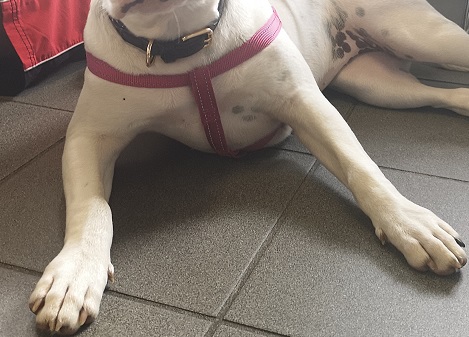Restrictive Harnesses: Restricting more than your dog’s pulling.
I am developing major concerns about the increased popularity of these easy restrictive leading harnesses.
Yes, they do work as described-your dog can’t pull you along as easily on a walk, but at what cost to the proper skeletal development and function of your dog?
I truly believe No actively growing puppy dog should ever wear one due to the potential to place abnormal negative forces on growing bones and joints.
If you are having to use a restrictive harness on an adult dog, then seriously consider taking your dog to either group training classes or have private one on one dog training sessions.
Next time you see or fit your dog on a restrictive body harness-the one that are a solid band across the front of the chest: Watch From the Side how your dog walks.
You don’t have to be a vet to realise the dog is being effectively hobbled…
- The dogs are unable to fully extend their shoulders and elbows out in a normal stride gait.
- Additionally, the dog’s neck is held higher with the head more rigid then when on a Y shaped old-style harness. Half the joy of a walk for a dog is the chance to use its nose to appreciate the world and its amazing smells and odours-a dog with a head spent stuck up in the air is a dog missing out on a basic need of life.
- The neck bobs up and down more around C6-C6 joint – where the neck joins the body-this is not a good place to have abnormal wear and tear in general, but especially not good in all puppies and in larger breed dogs.
- Often the tail is down and tight to the body in order to balance the higher head position.
- The toes are often hyperextended and end up splayed out to provide balance.
As a result, the side toes, usually non-major weight bearing are now weight bearing and you begin to see the appearance of pad and web skin disease as a result of abnormal contact.
Y-shaped harnesses can initially restrict the range of shoulder movement, often simply because the dog has to get used to the odd feel of a harness. However, should the dog really need to fully extend its front limbs for whatever reason it can do so. The head, neck, toe and tail gait on a Y- harness more closely resemble normal walking gait.
Our Facebook page -Feb 28th 2019 has a shared video showing very clearly the issue with movement.
